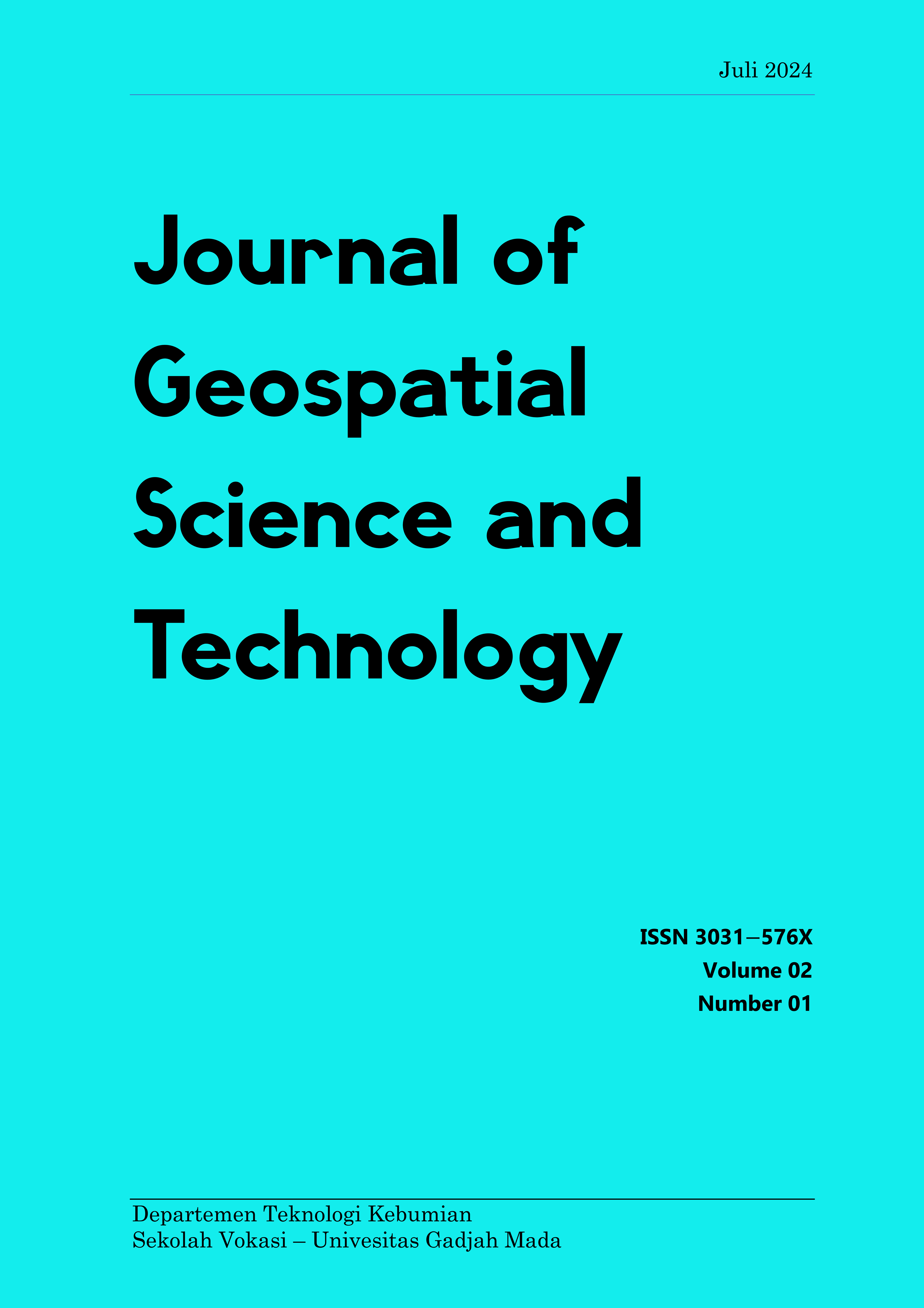The Impact of Tree Density on Automated Oil Palm Tree Counting Accuracy
Abstract
The rapid development of oil palm plantations in Kualuh Leidong Subdistrict, Labuhanbatu Utara District, North Sumatra Province has led to an increased need for effective and efficient monitoring and supervision of oil palm trees. One method that supports such monitoring and supervision is the use of an automatic counting method using orthophoto data. This orthophoto data was used for automatic tree counting using a deep learning method with the Faster R-CNN algorithm. The study considered two planting patterns: regular planting patterns with spacing of 4 to 9 meters, and random planting patterns with varying spacing. Data processing involved an epoch value of 80 and a batch size value of 4. The accuracy of the automatic oil palm tree counting was evaluated based on the density of the spacing between trees with reference to the ground truth. The findings indicated that the deep learning Faster R-CNN algorithm achieved higher accuracy in automatic calculations for regular planting patterns.
References
Alzubaidi, L., Zhang, J., Humaidi, A. J., Al-Dujaili, A., Duan, Y., Al-Shamma, O., Santamaría, J., Fadhel, M. A., Al-Amidie, M., & Farhan, L. (2021). Review of deep learning: concepts, CNN architectures, challenges, applications, future directions. In Journal of Big Data (Vol. 8, Nomor 1). Springer International Publishing. https://doi.org/10.1186/s40537-021-00444-8
Ammar, A., Koubaa, A., & Benjdira, B. (2021). Deep-learning-based automated palm tree counting and geolocation in large farms from aerial geotagged images. Agronomy, 11(8). https://doi.org/10.3390/agronomy11081458
BPS. (2022). Luas Tanaman dan Produksi Kelapa Sawit Tanaman Perkebunan Rakyat menurut Kabupaten/Kota 2019-2021. https://sumut.bps.go.id/indicator/54/204/1/luas-tanaman-dan-produksi-kelapa-sawit-tanaman-perkebunan-rakyat-menurut-kabupaten-kota.html
Hemanth, D. J., & Estrela, V. V. (2017). Deep learning for image processing applications (Vol. 31). IOS Press.
Lecun, Y., Bengio, Y., & Hinton, G. (2015). Deep learning. In Nature (Vol. 521, Nomor 7553, hal. 436–444). Nature Publishing Group. https://doi.org/10.1038/nature14539
Lin, C., & Nevatia, R. (1998). Building Detection and Description from a Single Intensity Image. Computer Vision and Image Understanding, 72(2), 101–121. https://doi.org/10.1006/cviu.1998.0724
Putra, W. S. E. (2016). Klasifikasi citra menggunakan convolutional neural network (CNN) pada caltech 101. Jurnal Teknik ITS, 5(1).
Suyanto, K., Ramadhani, N., & Mandala, S. (2019). Deep Learning Modernisasi Machine Learning Untuk Big Data. Informatika.
Wolf, P. R., Dewitt, B. A., & Wilkinson, B. E. (2014). Elements of Photogrammetry, with Application in GIS, McGraw Hill. In Elements of photogrammetry with application in GIS (Fourth edi). McGraw-Hill Education.
Wu, X., Sahoo, D., & Hoi, S. C. H. (2020). Recent advances in deep learning for object detection. Neurocomputing, 396, 39–64. https://doi.org/10.1016/j.neucom.2020.01.085

